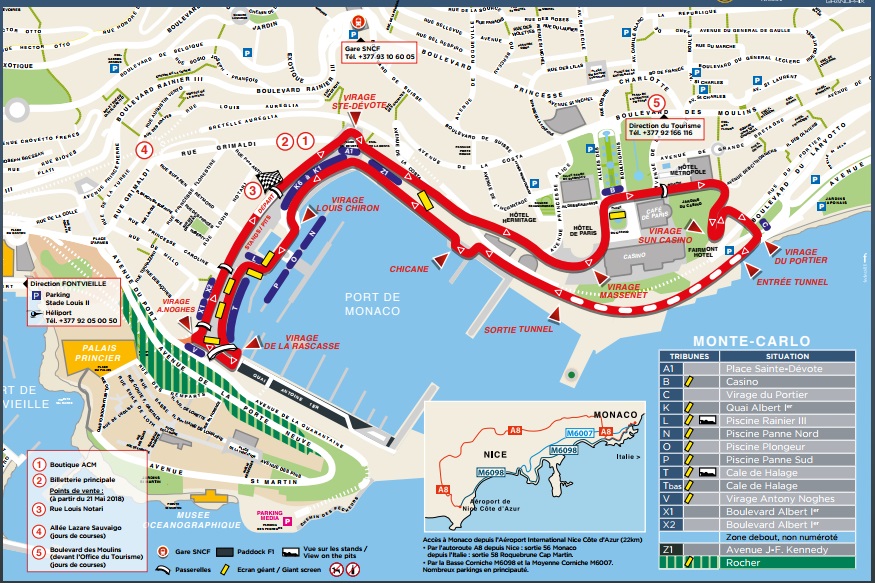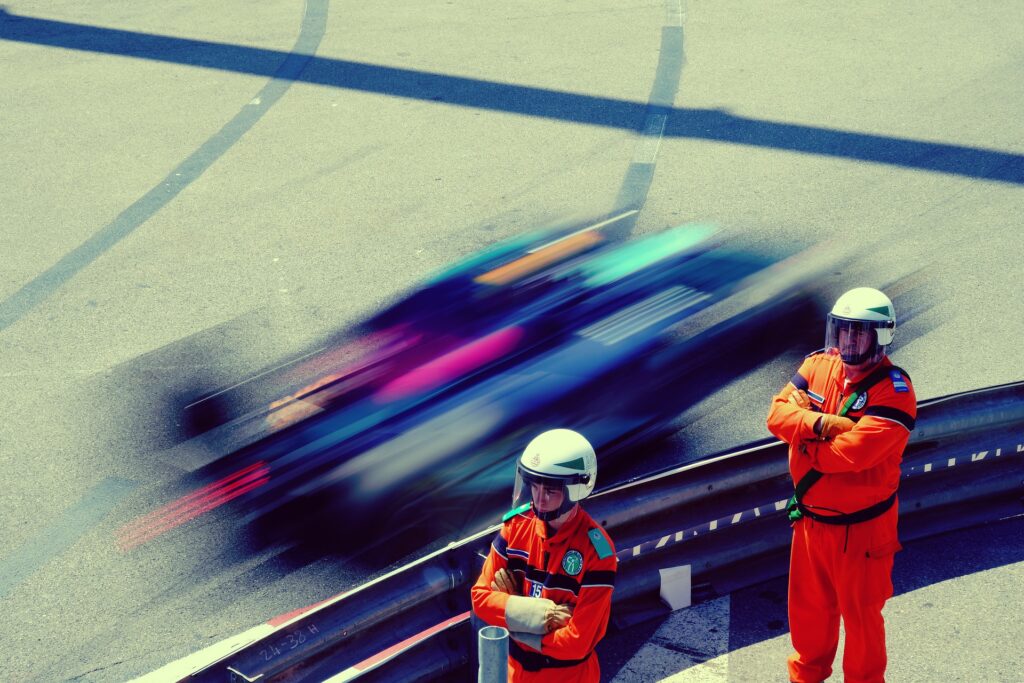Particularly well known, this spectacular „city race”, which takes place in a very tense atmosphere, is one of the most test stages of the Formula 1 World Championship for drivers. Thousands of gear changes in a labyrinth of tracks, the slowest turns in the World Championship, the fastest breakdown assistance in the world: The Monaco Grand Prix provides plenty of excitement.

Some history
The Monaco Grand Prix is one of the oldest and most prestigious car races. It takes place in the streets of the Principality of Monaco on the city track designed in 1929 by Antoni Noghes , son of the President of the Monaco Automobile Club, under the auspices of Prince Louis II of Monaco. This project was to meet the challenge of organizing a race in the small territory of Monaco (at that time about 1.5 km2) – a condition required by the International Sports Commission for the Automobile Club in Monaco to be internationally recognized.
Antony Noghes, as chief commissioner, was selected to travel to Paris to present the candidacy of the Automobile Club in Monaco. Unfortunately he returned inconsolably, gentlemen AIACRnoted that although the Club was organizing sporting events, they were not actually held on Monaco territory. At that time, 35-year-old Antony Noghes, whose self-esteem had been damaged, took on a fantastic challenge with all his youthful energy: to create a motorsport event in the country, that is, in the city.
But was the idea for a track in the city unattainable?
Antony Noghes pondered the advantages and disadvantages of the project for two years. In the end, he decided to entrust his project to the only people he knew he would get a relevant and objective opinion from: Louis Chiron on the sports side and Jacques Taffe on the technical side.
Then, first of all, he had to convince the Société des Bains de Mer to get involved and provide funding for this competition. Its administrator, René LEON, realized the benefits the project could bring and provided the required funding. No country in the world would have such a track! Today, the last curve on the track is known as „Virage Antony Noghes” after its creator.
Six months later, on April 14, 1929, Prince Pierre inaugurated with an honorary lap around the Torpedo Voisin circuit driven by Charles Faroux , race director, the 1st Monaco Grand Prix. There were 16 cars at the start of the race: 8 Bugatti, 3 Alfa Romeo, 2 Maserati, 1 Licorne, and 1 Mercedes SSK. Englishman Frank Williams, who had arrived too late to attend the official practice sessions, risked a wildcat training at dawn on Saturday, making the whole of Monaco a stir. Frank Williams won the Grand Prix in the green Bugatti 35 B in 3 hours, 56 minutes and 11 seconds, completing 100 laps at an average speed of 80.194 km / h.
Until the war, the popularity of the race grew from year to year and confirmed its success. The race was not held for ten years during and immediately after World War II. In 1948, Monaco held the Grand Prix again, which in the 1950s sounded with the names of Fangio and Maurice Trintignant .
In the 1960s and 1970s, Jacky Stewart and Jean-Pierre Beltoise took the baton, followed by Alain Prost , Ayrton Senna and Ricardo Patrese in the 1980s, and the 1990s saw the arrival of Micheal Schumacher 's uninterrupted reign .
Monaco Grand Prix Champions
- The famous Ayrton Senna entered the F1 scene with a stormy performance in the rain-soaked race in 1984 and holds the record for most victories at Monaco with six, including five consecutive wins between 1989 and 1993.
- Graham Hill scored five of his fourteen F1 victories on the streets of Monaco between 1963 and 1969.
- Michael Schumacher also had five victories in the Duchy between 1994 and 2001.
- Alain Prost won four times in the 1980s, while Stirling Moss and Jackie Stewart won three times in Monaco.
- Of the current racing drivers, Lewis Hamilton has had three victories in Monaco, Sebastian Vettel has triumphed twice, and Kimi Raikkonen and Daniel Ricciardo have won here once.
Today, the Monaco Grand Prix continues its tradition, as it did in 1928: its city circuit continues to delight 100,000 TV viewers worldwide. The Monaco track meanders around Port Hercule, Monte-Carlo and La Condamine Streets, in a series of tight curves surrounded by safety rails: unlike other tracks, there is no play between track and rails, requiring the presence of cranes in several places to clear as quickly as possible damaged cars.


